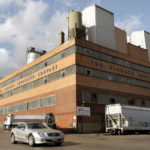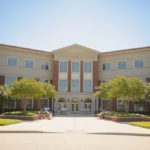By JOSH BOAK and CHRISTOPHER S. RUGABER
AP Economics Writers
WASHINGTON (AP) _ The U.S. unemployment rate has plunged since the start of last year to a five-year low of 6.1 percent. And the July jobs report being released Friday shows a sixth straight month of healthy 200,000-plus gains.
Yet for Douglas Hunter and millions like him, happy days aren’t quite here again.
Hunter earned $14 an hour cleaning oil drums before the Great Recession seized the economy and his job was axed. At 53, Hunter now works three days a week for $9.25 an hour, mopping floors and fixing fryers at two McDonald’s restaurants in Chicago.
“If the economy is getting better, I’m not sure for whom,” he said. “It certainly hasn’t trickled down to me.”
The Gallup Organization has found that consumers’ view of the economy is the glummest it’s been in seven months.
As the economic recovery enters its sixth year, a number of factors help explain why many Americans don’t feel better off: Income hasn’t rebounded. Millions are working part time even though they want full-time jobs. It’s taking longer to find work. People are still struggling with mortgage debt. Some feel down about the economy because of their political views. And most people don’t feel free to spend as much as they used to.
A closer look at the factors:
LAGGING INCOME
Most people are still earning less, adjusted for inflation, than before the recession struck at the end of 2007. Even many who kept their jobs through the recession _ or easily found work after being let go _ are no better off. The typical family income is an inflation-adjusted $52,959, according to Sentier Research. That’s $3,303 less than before the recession _ a nearly 6 percent drop.
A review by Wells Fargo found that after-tax income fell for the bottom 20 percent of earners and barely rose for the next-highest 20 percent during the recovery.
“Wages are just not keeping up,” said Christine Owens, executive director of the National Employment Law Project. “We don’t have an economy that is as robust as we need it to be.”
FEWER FULL-TIME JOBS
Finding a steady full-time job has become harder. There are 27.4 million part-time jobs, representing 18.8 percent of jobs in the U.S. economy, according to the Labor Department. Before the recession, 16.5 percent of all jobs were part time.
Some of this increase is due to the still-sluggish recovery: Employers want to cut costs and payrolls by limiting their workers to fewer than 35 hours a week. But the trend might also reflect a lasting shift among restaurants and coffee shops, said John Silvia, chief economist at Wells Fargo.
“A lot of companies have figured out that they didn’t need employees to sell coffee between 2 and 4 p.m. that nobody is buying,” Silvia said.
EMPLOYERS SLOW TO HIRE
The “Help Wanted” signs are out: There were 4.6 million available jobs in May, according to government data, the most in seven years and 20 percent more than a year ago. Yet not enough of those jobs are being filled.
Steven Davis, an economist at the University of Chicago, and two colleagues calculated that it took an average of more than 25 days for employers to fill a vacant job in May. That was up from an average of 22.5 days last year and is the longest such figure in the 13 years that the data has been tracked.
That suggests a mismatch in the job market: The unemployed might not have the skills companies want for the available jobs. Or businesses might not be offering enough pay or trying hard enough to fill the jobs.
BEHIND ON MORTGAGES
Whatever wealth most Americans have is mainly tied up in their homes. But roughly seven years after the housing bust, owning a home has still been a bad investment for many.
Nearly 37 percent of mortgage holders were “effectively underwater” through the first three months of 2014, according to the real estate firm Zillow. That means they either owe more than their homes are worth or a sale wouldn’t generate enough money to cover the closing costs and down payment for a new home.
Zillow estimates that average home prices nationally won’t regain their peak until 2017. For the Baltimore area, it could take until 2024. For Chicago and Kansas City, 2026. Minnesota’s Twin Cities aren’t expected to fully recover until 2028, more than two decades after the housing bust struck.
POLITICALLY SHAPED VIEWS
How people feel about President Barack Obama appears to influence their views of the economy. Republicans are overwhelmingly pessimistic, Democrats optimistic, according to Gallup.
Just 39 percent of everyone surveyed in June said the economy was improving; 56 percent described it as getting worse. The consumer confidence reading for existing conditions was negative 14 despite progress in hiring, auto sales and home buying.
Partisan affiliation is a factor. The confidence index for Democrats was 11, roughly the same as at the start of the year. Republicans? Their confidence was negative 38, reflecting how they think the health care law and Obama’s executive actions will affect the economy.
CAUTIOUS SHOPPING
Most Americans are still being careful at cash registers and online checkouts. Consumer spending has risen at an average annual pace of just 2.2 percent since the recession ended in mid-2009. That’s far below the 3.4 percent average in the two decades preceding the recession.
Americans are buying more cars. But that’s forced them to cut back in other areas, such as clothing and electronics. The CEO of The Container Store has said the chain’s sales and profits have suffered because consumers are in “a retail funk.” That’s hardly a surprise considering the weak pay growth and lingering anxiety after the gravest economic meltdown since the 1930s.
Confidence in the economy is still relatively low, suggesting that people are buying what they need instead of what they want. The Conference Board’s consumer confidence index was 85.2 in June. In the 20 years preceding the downturn, it averaged nearly 102.
The trauma of the Great Recession made people more guarded and less likely to splurge as they did during past recoveries.
“We’re still carrying some psychological baggage,” said Jack Kleinhenz, chief economist at the National Retail Federation.











